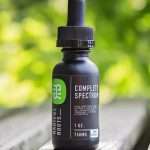Mold is a common issue that can affect both the structure of your home and your overall health. Identifying mold presence, understanding mold exposure, and taking proactive measures to mitigate it are crucial for creating a healthy living environment.
In this blog, we will explore the signs of mold in your home, ways to test for mold exposure, and effective strategies to reduce mold in your surroundings.
All the information provided is based on scientific research and studies.
Signs of Mold in Your Home:
Mold can thrive in areas with excess moisture and poor ventilation. Look out for the following signs that may indicate mold growth in your home:
a. Visible Mold Growth: Observe any visible mold patches on walls, ceilings, or other surfaces. Mold can appear fuzzy, discolored (usually green, black, or white), or resemble a stain.
b. Musty Odor: Mold often produces a distinct, musty smell. If you notice a persistent odor, investigate for possible mold sources.
Immortal All-Stars Capsules
Our herbal heavy hitters come together in this formula to help you reach your peak!
Complete Spectrum Tincture
The perfect add-on to any supplement assortment. Packed with full spectrum hemp to optimize your day or night!
c. Water Damage: Any past or present water leaks, flooding incidents, or areas with high humidity can contribute to mold growth.
Mold Exposure and Health Effects:
Exposure to mold can lead to a range of health issues, especially for individuals with allergies or respiratory conditions. Common symptoms associated with mold exposure include:
a. Allergic Reactions: Sneezing, coughing, itchy or watery eyes, nasal congestion, and skin rashes.
b. Respiratory Issues: Wheezing, shortness of breath, chest tightness, and aggravated asthma symptoms.
c. Sinus Infections: Chronic or recurring sinus infections that do not respond to treatment.
d. Fatigue and Cognitive Effects: Feeling tired, difficulty concentrating, memory problems, and mood changes.
Testing Your Home for Mold:
If you suspect mold in your home, there are several ways to test for its presence:
a. DIY Mold Testing Kits: These kits are available for purchase and include swabs, air sampling cassettes, or petri dishes to collect samples. Follow the instructions provided and send the samples to a certified laboratory for analysis.
b. Professional Mold Inspection: Hiring a certified mold inspector can provide a comprehensive assessment of your home, including air and surface sampling, moisture detection, and identifying potential mold sources.
Mitigating Mold Exposure:
Taking proactive measures to reduce mold in your environment can significantly improve your indoor air quality and overall health:
a. Maintain Proper Ventilation: Use exhaust fans in bathrooms, kitchens, and laundry rooms to remove excess moisture. Open windows for air circulation whenever possible.
b. Control Humidity Levels: Keep indoor humidity below 50% by using dehumidifiers, fixing leaks promptly, and addressing any water intrusion issues.
c. Fix Water Leaks and Moisture Sources: Inspect and repair any leaks from pipes, roofs, or windows. Address dampness issues in basements or crawl spaces.
d. Improve Airflow: Ensure proper ventilation in attics and crawl spaces to prevent moisture buildup. Use fans or air purifiers to circulate air in stagnant areas.
e. Regular Cleaning: Regularly clean and dry areas prone to moisture, such as bathrooms and kitchen surfaces. Use mold-inhibiting products and avoid using carpets in moisture-prone areas.
f. Professional Mold Remediation: For extensive mold growth, it’s essential to consult a certified mold remediation specialist who can safely remove and treat the affected areas.
Conclusion:
Identifying mold in your home, understanding its health impacts, and implementing effective mitigation strategies are vital for maintaining a healthy living environment.
By recognizing the signs of mold growth, testing your home for mold, and following the recommended steps to reduce mold exposure






